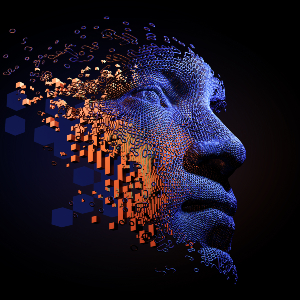
Introduction
Machine learning is slowly permeating every corner of our digital life, and with that life intrinsically tied to the internet, it’s never been a better time to be a hacker. With a massive digital surface and increasingly intelligent tools, hackers are holding just under $4 billion in ransom from large companies every year. Hacking has become advanced in a way that traditional cybersecurity cannot keep up with.
Just as hackers are using machine learning to increase their own successes in an increasingly digital world, AI used in cybersecurity is helping to stop the vast majority of these attacks.
AI – How Does it Work?
AI (Artificial Intelligence), or Machine Learning (ML), works by combining intelligent processing algorithms with large data sets. Each time the program runs a round of data processing, it measures its own performance and makes adjustments for the next round. Eventually, you have a program that is able to understand much more natural or organic issues, like visual identification or pattern recognition. After the algorithm has learned a data set, it can be given unique instructions, and this is where AI can become a boon to cybersecurity.
How is This Applied to Cybersecurity?
With an intelligent and self-learning AI, cybersecurity experts can allow parts of their job to be automated. Today, this largely includes network threat analysis, malware detection, insider threat detection and mitigation, and security analyst augmentation. In each of these tasks, the AI is given a baseline for normal activity and can “see” when something abnormal occurs. Depending on the permissions given to the program, the AI can either alert a human or actively prevent an attack from happening.
The Strategic Role of AI in Cybersecurity
AI’s role in cybersecurity today boils down to automation and pattern recognition.
The program can automatically detect irregularities on the network such as new workstations, code repositories, new hardware or software, or determine where security defenses are most needed. These are usually data-heavy tasks that would take a human a long time to process.
Pattern recognition comes in handy when trying to identify a hacker through linguistic patterns or techniques. AI can recognize jargon and develop methods for blocking these bad actors.
How AI Improves Cybersecurity
AI allows cybersecurity analysts to detect threats more easily or perform their jobs more efficiently, such as in these cases.
Threat Hunting
Threats like malware or spyware are numerous, but all behave in defined patterns once initiated. These are called “signature patterns,” and once the malware is discovered, the pattern can be documented. Once an AI learns this data, it can detect malware at a code level; significantly faster than a human.
Vulnerability Management
Vulnerabilities in security are growing at a rate of over 20% every year, with over 8,000 reported in Q1 2022 alone. The traditional approach is waiting for a hacker to exploit a vulnerability before attempting to counter it, but AI can combat this problem more actively. User and event behavioral analytics are learning techniques to identify odd or anomalous behavior. If an AI detects this, it may be able to identify the armor crack before the vulnerability is published.
Data Centers
AI can be a huge boon to the management of large data centers while also using this information to detect outside threats. Most critical failures of hardware or software come from a lack of maintenance, which in turn can come from a lack of optimization. Services like backup power, energy consumption, computer temperatures, climate control, and efficiency ratios can all be monitored by an AI which can communicate when there is, or maybe, a breakdown. Bandwidth usage can even be monitored for both optimization and threat detection.
Network Security
Network policy and topography are demanding aspects of network security that can be handled better by an AI which has better cyber security awareness. Policy dictates which connections are deemed legitimate and which need further inspection for threats, but creating these policies are ongoing and grueling. Topography is about which applications and workloads, and an AI can help improve an efficiency level by recognizing any workload shifts and accounting for them.
Drawbacks and Limitations of Using AI for Cybersecurity
AI is a new and exciting technology, but as with any new technology, the adoption rate is directly correlated to benefits and drawbacks.
Resources
AI is not a simple program. It requires computing power, large amounts of memory, data sets, and testing; all of which require company resources for no immediate payoff.
Data Sets
AI is nothing without its datasets, and datasets are largely created by humans for now. Obtaining these datasets is yet another responsibility given to a likely overwhelmed security team.
The Use of AI in Cyber Attacks
Hackers are fully aware of the opportunity that AI presents. Password cracking, list generation, and reactive malware are all new threats that AI-backed hackers use to orchestrate massive security breaches. With AI now more common than ever, hackers may even try to “poison” data sets (adding false values to the AI’s data set) that a security AI uses in order to soften its ability to detect threats. There are even combative events involving generative adversarial networks where each AI can gather data on each other. They both try to outperform the other without human input. It’s a new digital arms race in the making.
Conclusion
AI offers both opportunity and threat— countermeasure and attack methods. It both improves security while arming hackers with systems that can infiltrate better than ever before. Because of the universal opportunity it presents, AI adoption is not a matter of innovation, but one of evolution. AI is here to stay and is swiftly becoming the new standard for cybersecurity.
